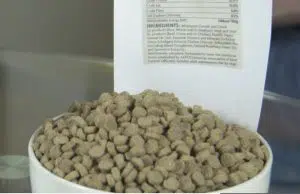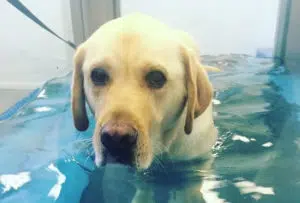
Microchipping dogs and cats is compulsory across most of Australia, but unfortunately many owners don’t update their pet’s microchip when they move home or change phone numbers.
Most recently I have had a few people contact me for advice when they have lost a pet and, alarmingly, I have found their pet’s microchip is not only not updated with their contact details, but it also still has the pet registered in the breeder’s name.
Even if the dog is registered with your local council in your name, if the microchip does not list you as the owner, the pound or animal shelter will not be able to release your pet to you until the listed ‘owner’ has confirmed and details are changed on the microchip database.
This makes it near impossible for an owner to get their pet back from the pound or shelter until the paperwork is sorted, which means many stressed and anxious pets have to spend more time in the pound, which is an extremely distressing environment for many pets.
When I have asked them if they updated their details when they got the puppy or kitten from the breeder, all of them have said they weren’t aware they needed to do that or simply didn’t look at all of the paperwork in detail so didn’t complete the change of ownership form and send it to the national microchip database.
When it comes to kittens and cats in particular, the large majority are not microchipped at all, which is why so many end up in pounds and shelters and facing euthanasia.
Microchips are about the size of a grain of rice and include all of your personal contact details. Similar to vaccinations, the microchip is inserted by a vet with a needle used to puncture the skin between the shoulder blades in just a couple of seconds.
I have seen many pets having a microchip inserted without any reaction at all and it won’t cause any discomfort once inserted. Each chip has a unique number that is detected using a microchip scanner.
The microchip number is recorded on a database registry with details about the animal and owner. Should your pet stray or become lost, vets, animal shelters and local councils can scan your pet for a microchip and contact you via the database.
If you are unsure if your pet is microchipped, if it is up to date, or even who they are registered with, you can take your pet to your vet who will use a scanner to locate the microchip and retrieve the details. They can advise you of the number if you don’t have it already.
The most widely used database in Australia is Central Animal Records, but your pet could be with any one of the following:
There really is no reason to not have your dog or cat microchipped. It costs anywhere between just $10 and $80 and is a once off fee. Many councils also offer discount microchip days, but don’t delay as it could literally mean the difference of having your pet returned to you if lost, or them ending up in an animal shelter and either re-homed or worse, euthanised.
Should your pet stray or become lost, vets, animal shelters and local councils can scan your pet for a microchip and contact you via the database.
It is vital though that if you change phone numbers or move house that you update your contact details. It is a good idea to also ask your vet to regularly scan the chip to ensure it is readable and hasn’t moved around.
I can’t believe how many people that get a puppy from a breeder aren’t sure if they have updated the details, or just assume they have been done, only to find they have not. Not to mention the amount of pets that are handed in to vets, pounds or shelters when lost that have old contact details listed.
It happens all the time, so don’t let your pet become a statistic and get on to it now!
As well as microchipping your pet and having their details updated, I strongly recommend that you also attach an engraved and legible I.D. tag to their collar so that your pet can be quickly returned to you without a visit to the vet or pound. You can also get a collar with their name and number embroidered on it as well.
Visit your local PETstock store to purchase and I.D. tag and get it engraved on the spot!
For more tips and advice on what to do if you have lost a pet, click HERE.
About the Author: Lara Shannon is a certified dog behaviourist and trainer, pet food nutrition specialist, Executive Producer and Host of Pooches at Play on Channel 10 and editor of Poochesatplay.com. Lara also runs her own dog training business in Melbourne’s Bayside area and is the Author of World of Dogs and Eat, Play, Love Your Dog

Exercising puppies – how much do they need?

Carbohydrates in dog food – what you need to know


What to feed a dog at each life stage



Get your paws on Lara Shannon’s best selling books ‘Eat, Play, Love (your dog) and World of Dogs.
Available in Australia, USA, UK and Canada.